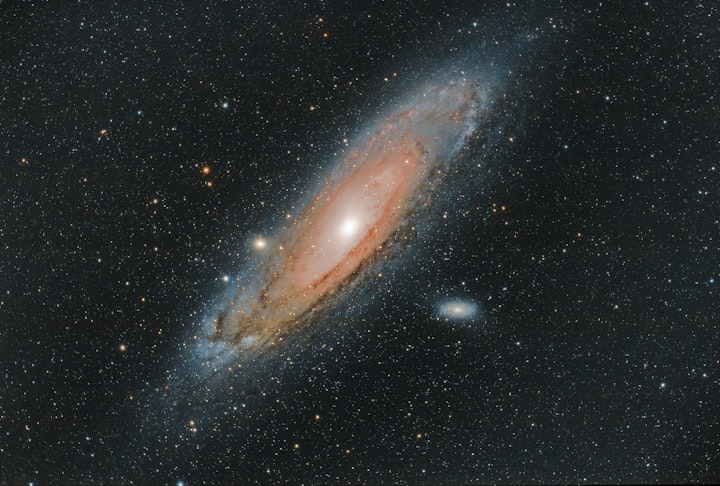Andromeda: Unveiling the Mysteries of Our Galactic Neighbor
A Journey into Our Galactic Neighbor's Enigmas

Introduction:
The Andromeda System, otherwise called More chaotic 31 or M31, has enthralled the creative mind of stargazers and space fans for quite a long time. Found around 2.537 million light-years from Earth, Andromeda is the nearest winding cosmic system to our Milky Way. It's amazing magnificence and captivating nature have prodded various exploration tries pointed toward disentangling the secrets disguised inside its tremendous field. In this article, we will investigate the exceptional qualities, authentic importance, and future possibilities related with the Andromeda World.
1. Revelation and Early Perceptions:
Andromeda has been seen by people for centuries, with the earliest recorded perceptions tracing all the way back to antiquated developments. In any case, it was only after the tenth century that the Persian cosmologist Abd al-Rahman al-Sufi made the principal nitty gritty record of Andromeda, portraying it as a "little cloud" in his heavenly index. Ensuing perceptions by stargazers, for example, Simon Marius and William Herschel progressively extended how we might interpret this far off heavenly substance.
2. Design and Creation:
Andromeda is a gigantic winding cosmic system, bragging a width roughly 220,000 light-years, making it bigger than our Milky Way. Its winding arms, made out of billions of stars, gas, and residue, fold over a splendid focal lump. Inside this cosmic system, researchers have recognized various star bunches, nebulae, and, surprisingly, a supermassive dark opening at its center, holding onto a mass huge number of times that of our Sun.
3. The Incomparable Andromeda Universe Impact:
One of the most interesting parts of Andromeda is its approaching crash course with the Milky Way. Stargazers foresee that in roughly 4 billion years, the two systems will impact, converging into a solitary, bigger universe. This enormous occasion, known as the Incomparable Cosmic Consolidation, presents a chance to concentrate on cosmic advancement, heavenly elements, and the destiny of our own nearby planet group.
4. Heavenly Populaces and Advancement:
The investigation of heavenly populaces in Andromeda gives significant experiences into the arrangement and advancement of systems. Stargazers have noticed different kinds of stars, including monstrous blue stars, red goliaths, and white diminutive people, inside Andromeda. The presence of these stars empowers space experts to decide the age and compound arrangement of the world, revealing insight into its transformative history.
5. Andromeda's Satellite Systems:
Andromeda is joined by various satellite systems, the most conspicuous being M32 and M110. These more modest systems, limited by gravitational powers, circle Andromeda and proposition significant pieces of information about the bigger universe's arrangement and associations. Researchers have utilized these satellite systems to gauge the complete mass of Andromeda and investigate its dim matter substance.
6. Andromeda in Current Astronomy:
With progressions in innovation and space investigation, how we might interpret Andromeda has extended essentially. Perceptions from space-based telescopes, for example, the Hubble Space Telescope and the Chandra X-beam Observatory, have given point by point pictures and spectroscopic information, empowering researchers to concentrate on Andromeda's elements, star development locales, and X-beam emanations. These perceptions have energized earth shattering exploration and worked with correlations among Andromeda and different systems.
7. The Fate of Andromeda Studies:
As innovation keeps on developing, future missions hold the possibility to open much more insider facts of Andromeda. The James Webb Space Telescope, set to send off sooner rather than later, vows to give exceptional perceptions, offering new bits of knowledge into the world's arrangement, the dissemination of dim matter, and the tenability of exoplanets inside Andromeda.
Conclusion:
The Andromeda System remains as a demonstration of the miracles of our universe, enthralling cosmologists.
what's more, stargazers the same. From its disclosure to the inescapable crash with our own Milky Way, Andromeda's secrets keep on unfurling, alluring us to investigate further. As we adventure further into the universe, furnished with state-of-the-art innovation and unquenchable interest, Andromeda will without a doubt stay a subject of interest and a rich wellspring of information for a long time into the future.






Comments
There are no comments for this story
Be the first to respond and start the conversation.